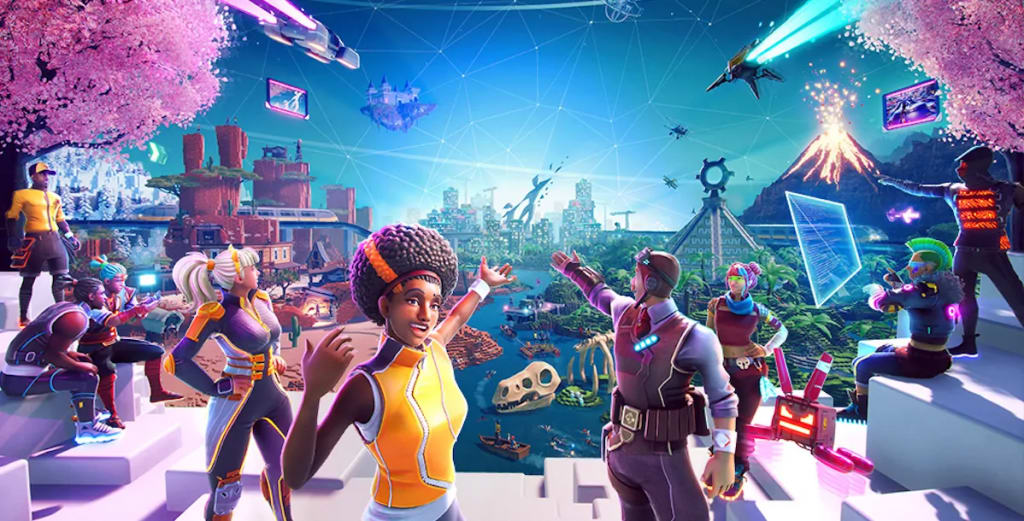Metaverse and NFTs - What should investors need to know about
Metaverse and NFTs - How are they related?

In recent months, a concept that was previously unfamiliar to many has been at the center of technological discussion and development: the metaverse. For many businesses, the race to launch their own metaverse projects has become an opportunity not to be left behind, and the concept has moved from the realm of science fiction into the realm of the (virtual) and the (physical). The industries include interior design, landscape architecture, clothing, film, music, retail, etc.
As more individuals spend time in a digital realm, the metaverse transforms into a parallel reality. In 2026, according to Gartner's research, one-quarter of the global population would spend at least one hour each day in the metaverse. The metaverse will become more than just a place to play games; it will be a hub for real-world pursuits like learning, working, shopping, and relaxing. According to the 2021 Grayscale Metaverse Report, the value of Web3 metaverses has increased by more than $27.5 billion since 2020, which is a multiplication of its previous estimate of $2. In this article, you’ll get more information on the relationship between the Metaverse and NFTs.
Metaverse and NFTs - How are they related?
Virtual concerts, trips, shops, transactions, movies, outfits, trying-on sessions, new ways of working, and so much more are all within the metaverse's reach.
Our horizons will broaden into a digital environment that is much more participatory and widely marketed. Since the metaverse will include both the real and the virtual, it will have a fully functioning economy, but it will not be governed by a single authority.
Metaverse proponents imagine a virtual world where everyone has their own avatar. This personalized digital persona may then be used to do things like go to a game or concert, shop, play a game, communicate with others, and more. While everybody with an internet connection will have access to the metaverse, not all of it will be completely free to use. Attending a concert, for instance, is likely to cost attendees money. Moreover, resources will be needed to develop the many components of the metaverse, including interactive games.
By allowing for the identification of goods, property, and even identity, non-fungible tokens (records of digital ownership recorded in the blockchain) will form the backbone of the metaverse economy. Each NFT is protected by a unique cryptographic key that cannot be lost, stolen, or compromised; this ensures dependable, decentralized verification of one's virtual identity and digital assets, which is essential for a successful metaverse society and for interacting with other metaverse communities.
There are a number of potential uses for NFTs in the metaverse, including the "TradArt" reality. Corporations and middlemen in this industry are not doing enough to compensate artists for their work. NFTs are useful in the realm of digital property. NFTs are the land and buildings of the metaverse, and they also serve as the legal agreement of ownership. Property in the metaverse must be represented by a newly minted NFT in order to be bought, sold, or constructed.
Digital works of art and property may be shown in the metaverse, with price and ownership verification handled by NFTs.
Are NFTs key to accessing the Metaverse?
NFTs provide a structure for assigning monetary worth to digital assets, since they may be used to establish the legitimacy of a claim to ownership. The ownership of virtual property or the ability to enter a virtual concert, for instance, may both be verified with the use of NFTs. And many metaverse games will employ NFTs as in-game currency.
People will utilize various cryptocurrencies to buy these NFTs. As the metaverse expands, it may be a good time to invest in cryptocurrency. The currency of the metaverse will be cryptocurrency, and each metaverse platform will use its own token system. Decentraland's native token, MANA, may be used to purchase virtual goods and services in the virtual world.
Users and companies may now transfer physical goods and services into the metaverse, a decentralized online space. Innovative gaming models with interoperable blockchain games are one method to entice more physical assets into the metaverse.
One method that has proven successful in attracting and retaining players in blockchain games is the play-to-earn paradigm. Using NFTs, users may take part in the metaverse's in-game economy and be compensated for the value they create while playing. As opposed to conventional games, where players' assets are owned by the game itself, play-to-earn games in the metaverse give players complete authority over their possessions.
We should expect the metaverse to evolve into a fully realized virtual environment with all the conveniences of the physical world and more, particularly in those virtual locations where the physical rules of our universe no longer hold.
As we immerse ourselves in this new and fascinating domain, we'll be able to socialize, play, work, learn, share, and have fun with our loved ones, and new markets, economies, and even vocations will arise as a result.






Comments
There are no comments for this story
Be the first to respond and start the conversation.